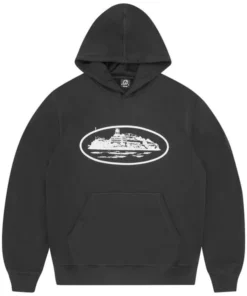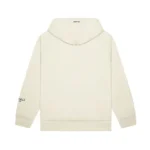Comme des Garçons: The Revolutionary Fashion House
Introduction Comme des Garçons, often abbreviated as CdG, is a Japanese fashion label founded by Rei Kawakubo in 1969. Known for its avant-garde aesthetics, deconstructed designs, and conceptual approach to fashion, Comme des Garçons has continually challenged conventional beauty standards and redefined the meaning of contemporary fashion.
History and Origins Rei Kawakubo, the visionary behind Comme des Garçons, started the brand in Tokyo. With no formal training in fashion, Kawakubo’s perspective was uninhibited by traditional tailoring techniques. She launched the first Comme des Garçons collection in 1973, and by 1981, she made her Paris debut, shaking the fashion world with her dark, asymmetrical, and distressed designs. The show was met with mixed reactions, yet it marked the beginning of Comme des Garçons’ profound influence on the global fashion industry.
Design Philosophy Comme des Garçons is not just a clothing brand; it is an ideology that challenges traditional fashion norms. Kawakubo’s designs often embrace:
- Deconstruction: Clothes with unfinished hems, asymmetrical silhouettes, and inside-out details.
- Monochrome Aesthetic: Early collections featured primarily black, gray, and white, reflecting a stark, intellectual approach to fashion.
- Anti-Fashion Statement: Comme des Garçons has often rejected trends, instead proposing avant-garde and conceptual ideas that transcend seasonal cycles.
- Experimental Textiles: The brand frequently collaborates with textile developers to create unique, unconventional fabrics.
Comme des Garçons’ Impact on Fashion The influence of Comme des Garçons extends far beyond clothing. Kawakubo’s designs have challenged mainstream notions of beauty and femininity. Some key moments include:
- 1980s ‘Holes’ Collection: Introducing tattered and asymmetrical pieces, challenging the idea of perfection.
- Body Morphing Collection (1997): Padded, distorted silhouettes that questioned traditional body shapes in fashion.
- Met Gala 2017 Tribute: The Metropolitan Museum of Art honored Rei Kawakubo with an exhibition, only the second living designer to receive such recognition after Yves Saint Laurent.
Expansion and Collaborations Comme des Garçons has expanded into multiple sub-labels and collaborations, making avant-garde fashion more accessible. Some notable projects include:
- Comme des Garçons Play: A more casual, logo-driven line featuring the iconic heart emblem with eyes, designed by Polish artist Filip Pagowski.
- Comme des Garçons Homme: A menswear line with a focus on tailoring and streetwear influences.
- Collaborations: Partnerships with brands like Nike, Converse, Supreme, and Louis Vuitton have bridged the gap between high fashion and streetwear.
Retail Presence and Dover Street Market Beyond traditional retail, Comme des Garçons has redefined shopping experiences through Dover Street Market (DSM). Founded by Kawakubo in 2004, DSM is a concept store that curates fashion, art, and culture in a dynamic retail environment. With locations in London, New York, Tokyo, and Beijing, DSM continues to shape contemporary fashion retailing.
Comme des Garçons: The Revolutionary Fashion House
Introduction Comme des Garçons, often abbreviated as CdG, is a Japanese fashion label founded by Rei Kawakubo in 1969. Known for its avant-garde aesthetics, deconstructed designs, and conceptual approach to fashion, Comme des Garçons has continually challenged conventional beauty standards and redefined the meaning of contemporary fashion.
History and Origins Rei Kawakubo, the visionary behind Comme des Garçons, started the brand in Tokyo. With no formal training in fashion, Kawakubo’s perspective was uninhibited by traditional tailoring techniques. She launched the first Comme des Garçons collection in 1973, and by 1981, she made her Paris debut, shaking the fashion world with her dark, asymmetrical, and distressed designs. The show was met with mixed reactions, yet it marked the beginning of Comme des Garçons’ profound influence on the global fashion industry.
Design Philosophy Comme des Garçons is not just a clothing brand; it is an ideology that challenges traditional fashion norms. Kawakubo’s designs often embrace:
- Deconstruction: Clothes with unfinished hems, asymmetrical silhouettes, and inside-out details.
- Monochrome Aesthetic: Early collections featured primarily black, gray, and white, reflecting a stark, intellectual approach to fashion.
- Anti-Fashion Statement: Comme des Garçons has often rejected trends, instead proposing avant-garde and conceptual ideas that transcend seasonal cycles.
- Experimental Textiles: The brand frequently collaborates with textile developers to create unique, unconventional fabrics.
Comme des Garçons’ Impact on Fashion The influence of Comme des Garçons extends far beyond clothing. Kawakubo’s designs have challenged mainstream notions of beauty and femininity. Some key moments include:
- 1980s ‘Holes’ Collection: Introducing tattered and asymmetrical pieces, challenging the idea of perfection.
- Body Morphing Collection (1997): Padded, distorted silhouettes that questioned traditional body shapes in fashion.
- Met Gala 2017 Tribute: The Metropolitan Museum of Art honored Rei Kawakubo with an exhibition, only the second living designer to receive such recognition after Yves Saint Laurent.
Expansion and Collaborations Comme des Garçons has expanded into multiple sub-labels and collaborations, making avant-garde fashion more accessible. Some notable projects include:
- Comme des Garçons Play: A more casual, logo-driven line featuring the iconic heart emblem with eyes, designed by Polish artist Filip Pagowski.
- Comme des Garçons Homme: A menswear line with a focus on tailoring and streetwear influences.
- Collaborations: Partnerships with brands like Nike, Converse, Supreme, and Louis Vuitton have bridged the gap between high fashion and streetwear.
Retail Presence and Dover Street Market Beyond traditional retail, Comme des Garçons has redefined shopping experiences through Dover Street Market (DSM). Founded by Kawakubo in 2004, DSM is a concept store that curates fashion, art, and culture in a dynamic retail environment. With locations in London, New York, Tokyo, and Beijing, DSM continues to shape contemporary fashion retailing.
Comme des Garçons: The Revolutionary Fashion House
Introduction Comme des Garçons, often abbreviated as CdG, is a Japanese fashion label founded by Rei Kawakubo in 1969. Known for its avant-garde aesthetics, deconstructed designs, and conceptual approach to fashion, Comme des Garçons has continually challenged conventional beauty standards and redefined the meaning of contemporary fashion.
History and Origins Rei Kawakubo, the visionary behind Comme des Garçons, started the brand in Tokyo. With no formal training in fashion, Kawakubo’s perspective was uninhibited by traditional tailoring techniques. She launched the first Comme des Garçons collection in 1973, and by 1981, she made her Paris debut, shaking the fashion world with her dark, asymmetrical, and distressed designs. The show was met with mixed reactions, yet it marked the beginning of Comme des Garçons’ profound influence on the global fashion industry.
Design Philosophy Comme des Garçons is not just a clothing brand; it is an ideology that challenges traditional fashion norms. Kawakubo’s designs often embrace:
- Deconstruction: Clothes with unfinished hems, asymmetrical silhouettes, and inside-out details.
- Monochrome Aesthetic: Early collections featured primarily black, gray, and white, reflecting a stark, intellectual approach to fashion.
- Anti-Fashion Statement: Comme des Garçons has often rejected trends, instead proposing avant-garde and conceptual ideas that transcend seasonal cycles.
- Experimental Textiles: The brand frequently collaborates with textile developers to create unique, unconventional fabrics.
Comme des Garçons’ Impact on Fashion The influence of Comme des Garçons extends far beyond clothing. Kawakubo’s designs have challenged mainstream notions of beauty and femininity. Some key moments include:
- 1980s ‘Holes’ Collection: Introducing tattered and asymmetrical pieces, challenging the idea of perfection.
- Body Morphing Collection (1997): Padded, distorted silhouettes that questioned traditional body shapes in fashion.
- Met Gala 2017 Tribute: The Metropolitan Museum of Art honored Rei Kawakubo with an exhibition, only the second living designer to receive such recognition after Yves Saint Laurent.
Expansion and Collaborations Comme des Garçons has expanded into multiple sub-labels and collaborations, making avant-garde fashion more accessible. Some notable projects include:
- Comme des Garçons Play: A more casual, logo-driven line featuring the iconic heart emblem with eyes, designed by Polish artist Filip Pagowski.
- Comme des Garçons Homme: A menswear line with a focus on tailoring and streetwear influences.
- Collaborations: Partnerships with brands like Nike, Converse, Supreme, and Louis Vuitton have bridged the gap between high fashion and streetwear.
Retail Presence and Dover Street Market Beyond traditional retail, Comme des Garçons has redefined shopping experiences through Dover Street Market (DSM). Founded by Kawakubo in 2004, DSM is a concept store that curates fashion, art, and culture in a dynamic retail environment. With locations in London, New York, Tokyo, and Beijing, DSM continues to shape contemporary fashion retailing.
Comme des Garçons: The Revolutionary Fashion House
Introduction Comme des Garçons, often abbreviated as CdG, is a Japanese fashion label founded by Rei Kawakubo in 1969. Known for its avant-garde aesthetics, deconstructed designs, and conceptual approach to fashion, Comme des Garçons has continually challenged conventional beauty standards and redefined the meaning of contemporary fashion.
History and Origins Rei Kawakubo, the visionary behind Comme des Garçons, started the brand in Tokyo. With no formal training in fashion, Kawakubo’s perspective was uninhibited by traditional tailoring techniques. She launched the first Comme des Garçons collection in 1973, and by 1981, she made her Paris debut, shaking the fashion world with her dark, asymmetrical, and distressed designs. The show was met with mixed reactions, yet it marked the beginning of Comme des Garçons’ profound influence on the global fashion industry.
Design Philosophy Comme des Garçons is not just a clothing brand; it is an ideology that challenges traditional fashion norms. Kawakubo’s designs often embrace:
- Deconstruction: Clothes with unfinished hems, asymmetrical silhouettes, and inside-out details.
- Monochrome Aesthetic: Early collections featured primarily black, gray, and white, reflecting a stark, intellectual approach to fashion.
- Anti-Fashion Statement: Comme des Garçons has often rejected trends, instead proposing avant-garde and conceptual ideas that transcend seasonal cycles.
- Experimental Textiles: The brand frequently collaborates with textile developers to create unique, unconventional fabrics.
Comme des Garçons’ Impact on Fashion The influence of Comme des Garçons extends far beyond clothing. Kawakubo’s designs have challenged mainstream notions of beauty and femininity. Some key moments include:
- 1980s ‘Holes’ Collection: Introducing tattered and asymmetrical pieces, challenging the idea of perfection.
- Body Morphing Collection (1997): Padded, distorted silhouettes that questioned traditional body shapes in fashion.
- Met Gala 2017 Tribute: The Metropolitan Museum of Art honored Rei Kawakubo with an exhibition, only the second living designer to receive such recognition after Yves Saint Laurent.
Expansion and Collaborations Comme des Garçons has expanded into multiple sub-labels and collaborations, making avant-garde fashion more accessible. Some notable projects include:
- Comme des Garçons Play: A more casual, logo-driven line featuring the iconic heart emblem with eyes, designed by Polish artist Filip Pagowski.
- Comme des Garçons Homme: A menswear line with a focus on tailoring and streetwear influences.
- Collaborations: Partnerships with brands like Nike, Converse, Supreme, and Louis Vuitton have bridged the gap between high fashion and streetwear.
Retail Presence and Dover Street Market Beyond traditional retail, Comme des Garçons has redefined shopping experiences through Dover Street Market (DSM). Founded by Kawakubo in 2004, DSM is a concept store that curates fashion, art, and culture in a dynamic retail environment. With locations in London, New York, Tokyo, and Beijing, DSM continues to shape contemporary fashion retailing.
Cultural Influence Comme des Garcons radical approach has inspired countless designers and artists. The brand’s fearless experimentation and nonconformist ethos resonate with those who seek individuality and artistic expression. CdG remains a symbol of intellectual rebellion in fashion, influencing both high-end couture and streetwear trends.
Conclusion Comme des Garçons hoodie is more than a fashion brand; it is a movement that continues to challenge norms and redefine aesthetics. With Rei Kawakubo at the helm, the label persists in pushing the boundaries of creativity, making it one of the most influential and enduring forces in the fashion industry today



